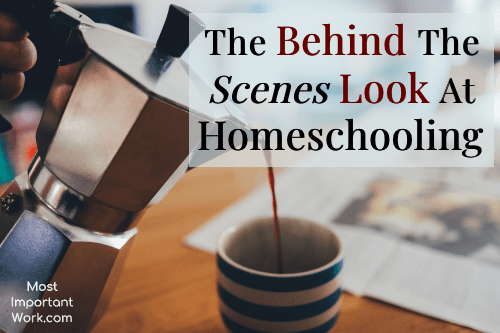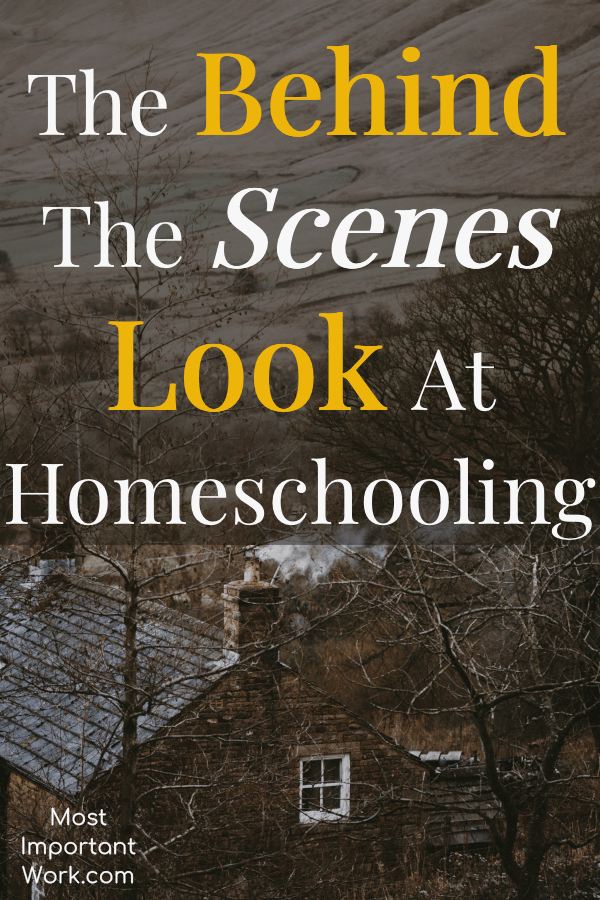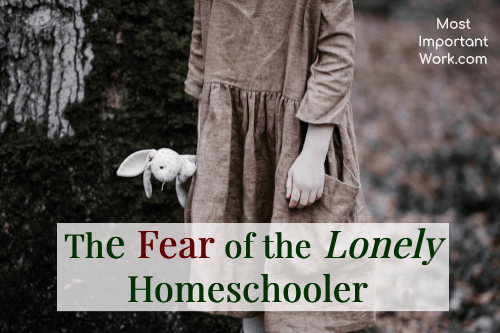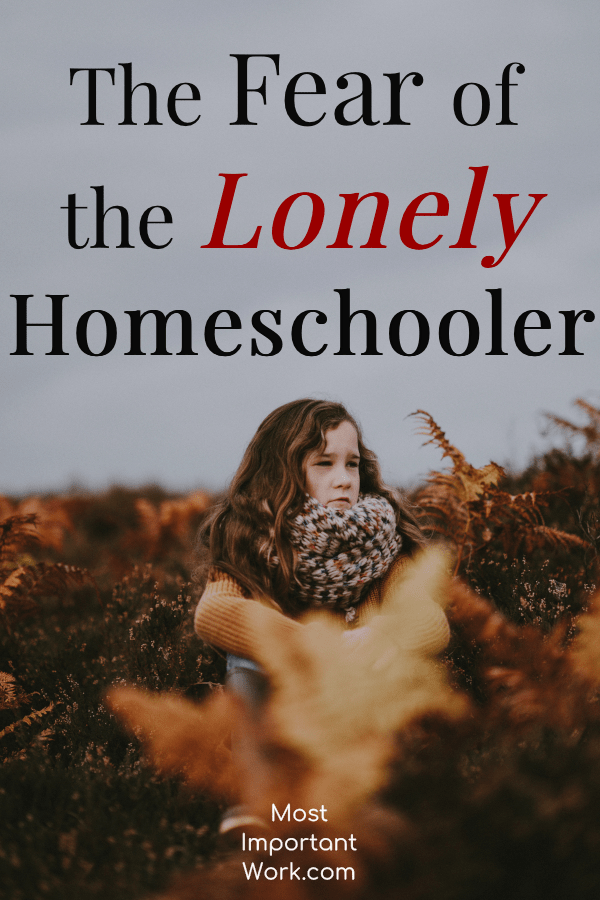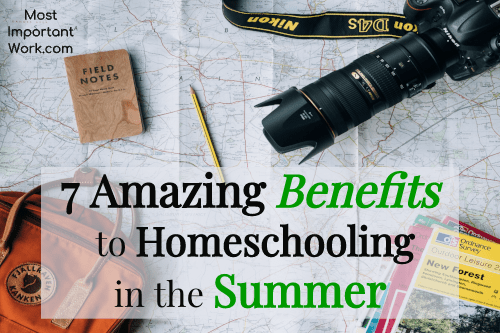
7 Amazing Benefits To Homeschooling In The Summer
Reading Time: 4 min 49 sec
The end of May rolled around and we closed our school books with a bang. I don’t know who was more excited for NO SCHOOLWORK: me or the children. I was more than ready for this school year to be done.
The first couple of days were magical; sleeping in, sticky popsicles, trips to the pool, and hours spent reading books. And then suddenly, like a storm cloud, the restlessness, whining, arguing, and repetitive phrases of, “I’m bored!” started appearing out of nowhere.
When I first heard about homeschooling in the summer, I thought, “Why in the world would anyone want to give up the beauty of summer for year-round school ? Let’s be honest, MAMA NEEDS A BREAK! Kids need to play in mud puddles, build forts, and just be kids.
I did just that for a year or two and learned that for our family we thrive with a little structure in place. We stumbled our way into homeschooling during the summer by necessity and found that what appeared to be soul-sucking was actually very life-giving.
We already view homeschooling as life learning so it wasn’t a big jump to incorporate some intentional learning time throughout the summer. We have a flexible rhythm that builds in time for intentional learning and still leaves plenty of time for soaking up the summer sun.
1. Rhythm to the Day
2. Focus on 1 or 2 Subjects
3. School Year Flexibility
4. Explore New Interests
5. Learn Outside
6. The Answer To “I’m Bored”
7. Intentional Time Together
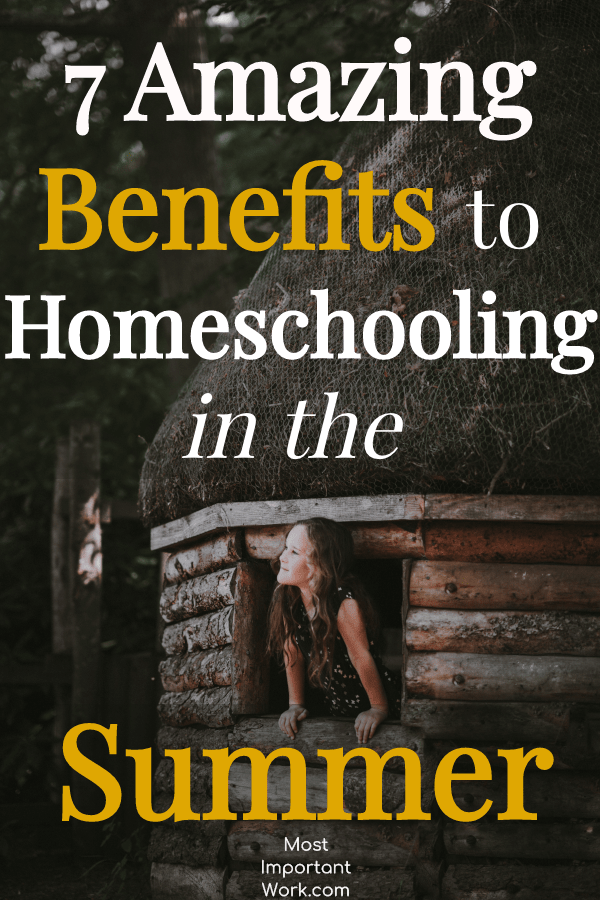
1. Rhythm To The Day
There is such peace when you follow a daily rhythm. (You can learn more about why we use a rhythm instead of a schedule here) We have a rhythm for the school year and a different rhythm for summer. Our summer rhythm takes advantage of those unique summer opportunities, such as beautiful weather, different sports, etc. by incorporating a lot of outside time.
We always put our priorities first and all of the optional activities or to do’s second. Priorities might be time with Jesus, chores, homeschooling, play and time spent outside. Optional activities: Pool, field trips, time with friends and family, etc.
2. Focus On 1 or 2 Subjects
I love how the slow pace of the summer allows you to focus on one or two challenging subjects. It makes it easier to engage with harder subjects in smaller increments and when it is the only thing you have to do that day. We treat this learning time like icing on the cake, bonus learning, and it becomes way more enjoyable.
To clarify, we are only spending twenty to thirty minutes on a chosen subject each day. But WOW, the end of the summer those small chunks of time produce such growth in our children.
3. School Year Flexibility
When you homeschool during the summer you get greater flexibility during the school year. You can take your time when learning challenging subjects, explore a four-day school week, or take multiple week-long breaks during the school year. It’s amazing how much easier it is to homeschool when you aren’t participating in a race to “get it done” by the end of the school term.
I fell in love with summer learning because one hour a day spent learning makes the world of difference, come fall. You don’t have to fight to get back in a routine. You feel like you have a leg up on the school year because you never stopped.
You also have the joy of knowing that whenever you or your children need a mental break, you can stop and not have to spend the rest of the year scrambling to catch up. Plus, you still have time to lounge by the pool and soak up the summer sun. What could be better than that?! ![]()
4. Explore New Interests
If your children are anything like mine, they have endless interests and hobbies. The summer gives them the opportunity to really explore those interests that they might not have time for during the school year. You have the time to dive down rabbit holes without feeling the pressure to move on to cover all of your main subjects for the day.
At the end of each school year, I ask my children what they would like to learn this summer. Their answers have been very eclectic and we have had fun learning new skills and exploring new areas of study. Honestly, I would have never chosen to explore these areas of learning. However, this exercise teaches my children ownership and that they can learn anything they set their mind too.
5. Learn Outside
Your summer learning doesn’t have to happen inside. We wake up early before the summer heat and explore gardens, ponds, woods, and streams. We grab books, art supplies, hiking paraphernalia, a blanket and always tons of snacks and enjoy the beautiful weather. We might study math from a picnic blanket outside, read about the ecosystem, and then wade into a stream, stay up late and study the stars with a telescope.
If you are looking for unusual ideas for outside activities, here are some suggestions.
1. Ask your children what they would like to learn about or discover this summer.
2. Revisit any unit studies you did during the fall. Are there any activities that could reinforce that learning?
3. Check out local nature conservatories, arboretums, and parks for more ideas.
4. Explore your cities parenting website or magazine (check your local grocery store) for fun field trip ideas.
6. The Answer To “I’m Bored”
Have you ever reached that point when the novelty of summer has worn off and your kids just wander around repeating, “I’m bored?” a hundred times a day?

I believe that its healthy for kids to be bored because that is where creativity thrives. When kids are encouraged to use their imaginations, suddenly forts are created, water balloon wars have commenced, and secret worlds are discovered.
However, I have noticed that a lot of questions arise when there are huge chunks of free time without a plan. Kids like to know what’s coming next, even if it’s just lunch. I have found that when you follow a rhythm, kids feel free to create and play knowing what’s (dinner, snacks, pool, etc.) coming up.
7. Time Together
When you get going too fast during the summer, your kids can miss out on some intentional one on one time with you. Spending an hour or two a day engaged in intentional learning is a perfect opportunity to spend focused time with your children.
It could look like snuggling on the couch and reading that stack of library books aloud, or grabbing a bunch of coloring books and listening to your favorite audio stories (these are our favorite). Board games are also a great way to spend time together while participating in some sneaky learning.
Here are my favorite low-prep summer resources:
Are you wondering HOW do you actually get started homeschooling? Join our community of moms who want to invest in the lives of their children through homeschooling. I also created a 10 Tips to Finding Excellent Curriculum form to help you on your journey.
What about you? What are your thoughts on homeschooling during the summer? Leave a comment, and don’t forget to follow Most Important Work on Pinterest!








































































